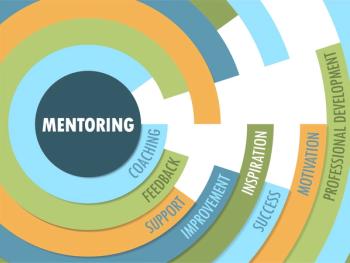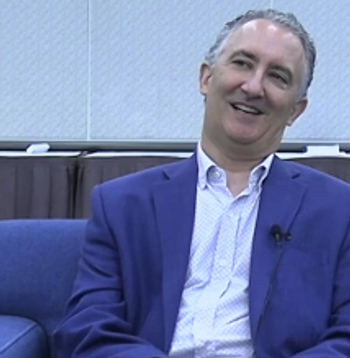
- Vol 32 No 5
- Volume 32
- Issue 5
How Clinicians Actually Use the DSM: Psychiatric Times Survey Results
Given that one of the primary goals of making DSM revisions is to improve its clinical utility, establishing a baseline of current usage is critical to inform future proposals. For this and other reasons, the authors provide preliminary results from research focused on determining clinicians’ actual use of DSM.
How do you use the DSM, doctor? Is it an integral part of your diagnostic decision making? Do you use it to help you select treatment or gauge a patient’s prognosis? Do you rely on it mainly for coding and billing? For something else entirely?
There is strikingly little information available in the literature regarding how clinicians actually use the DSM in their everyday practice.1,2
Getting a better understanding of how the DSM is used by clinicians is important for several reasons:
• Many of the uses of the DSM (eg, communicating diagnostic information to other clinicians, accurately applying research studies that define study groups using DSM criteria) depend on a relatively faithful application of the DSM criteria.
• Given that one of the primary goals of making DSM revisions is to improve its clinical utility, establishing a baseline of current usage is critical to inform future proposals.
• Knowledge about how clinicians use the DSM is important in determining the likely impact of changes to the diagnostic system on practice patterns-a major source of criticism during the DSM-5 revision process.
Michael First, MD,1 and his fellow members of the Group for the Advancement of Psychiatry (GAP) Psychopathology Committee recently called for additional research that focuses on determining clinicians’ actual use of the DSM. Psychiatric Times subsequently posted a survey on its Web site that was developed by the GAP Psychopathology Committee.
Although the survey will be analyzed in detail at a later date, we wanted to take this opportunity to provide you with some preliminary results. The survey is open for a few more weeks and we welcome your participation:
To date, 894 readers have completed the survey. The demographic breakdown:
• 62% of respondents reported that they currently use DSM-5; 38% still use DSM-IV
• 92% of respondents provide more than 4 hours per week of direct patient care
• 5% are under age 30; 30% are 30 to 49; 43% are 50 to 64; and 22% are over 65
• 43% are female; 57% are male
• 60% of the respondents report being a psychiatrist; 14% are psychologists; 5%, social workers; 6%, counselors; 11%, nurse practitioners or physician’s assistants; and 4%, lawyers, administrators, or “other”
• 88% report being Adult clinicians; 31%, Child clinicians; 19%, Geriatric clinicians; 13%, Forensic clinicians; 20%, Addiction specialists; 17%, Community-based clinicians; and 14%, Consultation-liaison (the percentages do not add up to 100%, since respondents were allowed to indicate more than one specialty)
• 59% report being in outpatient private practice, 35% practice public sector psychiatry, 28% are academically based, and 16% are non-academic hospital-based
• Respondents report spending average times of up to 72% clinical, 16% administrative, 11% research, 13% teaching, 14% consultation, and 12% other.
Respondents were first asked about their everyday DSM usage when making initial diagnoses during the assessment phase of treatment across a variety of different uses (Table 1). They were then asked the same question-but as it pertains to ongoing treatment (Table 2). They were also asked about usefulness of DSM in everyday practice (Table 3).
In both initial and ongoing everyday practice, the majority of the respondents use DSM codes for administrative/billing purposes. About half report that they “sometimes,” “often,” or “always” use DSM to review specific criteria with the pa-tient or family and more than 60% use it “sometimes,” “often,” or “always” to review relevant text for specific disorders. In the initial evaluation of a patient, close to 85% “sometimes,” “often” or “always” use DSM diagnostic criteria from memory-but not as much during ongoing treatment.
Overall, a significant minority do not find the DSM to be very helpful in selecting treatment, and about half do not find it helpful for determining prognosis. It is seen as most useful in meeting administrative requirements, in communicating with colleagues, and in teaching.
Whatever controversies surround the DSM, this manual is already in widespread use for multiple purposes. This survey gives us the first picture of how clinicians are using the DSM-and for what purposes. We hope that these preliminary findings will stimulate further study of DSM use in clinical practice as part of the American Psychiatric Association’s plans for further revisions.
References:
1. First MB, Bhat V, Adler D, et al. How do clinicians actually use the Diagnostic and Statistical Manual of Mental Disorders in clinical practice and why we need to know more. J Nerv Ment Dis. 2014;202: 841-844.
2. Kweskin S. Why we need to know how clinicians use the DSM. Psychiatr Times. 2015;32(2): 1-2, 28.
Articles in this issue
over 10 years ago
Psychiatric Care of Patients With Hepatitis C: A Clinical Updateover 10 years ago
Lessons From Litigationover 10 years ago
Defending a Malpractice Suit: Lessons Learnedover 10 years ago
Correcting Psychiatry’s False Assumptions and Implementing Parityover 10 years ago
Psychiatric Times Welcomes New Editorial Board Members!Newsletter
Receive trusted psychiatric news, expert analysis, and clinical insights — subscribe today to support your practice and your patients.











